Bambu Lab A1 Mini
- Set Printer to Automated Mode: Please follow the instructions here to set your printer to automated mode.
1.0 What's in the Kit
Printed Parts
- 2 x Tilt Brackets (AM1, AM2)
- Tilt Bracket Left (AM1)
- Tilt Bracket Right (AM2)
- 1 x Front Brace (AM3)
- 4 x Spacers
- 3 x 12mm Spacers
- 1 x 3mm Spacer
Hardware
- 4 x M4x20 Button head screws
- 4 x M4 Hex nuts
- 4 x Rubber Feet
2.0 Install Tilt Kit
-
Using the provided rubber feet, peel off the adhesive backing and adhere to the bottom of the tilt brackets (AM1, AM2) and front brace (AM3) (If not pre-installed):
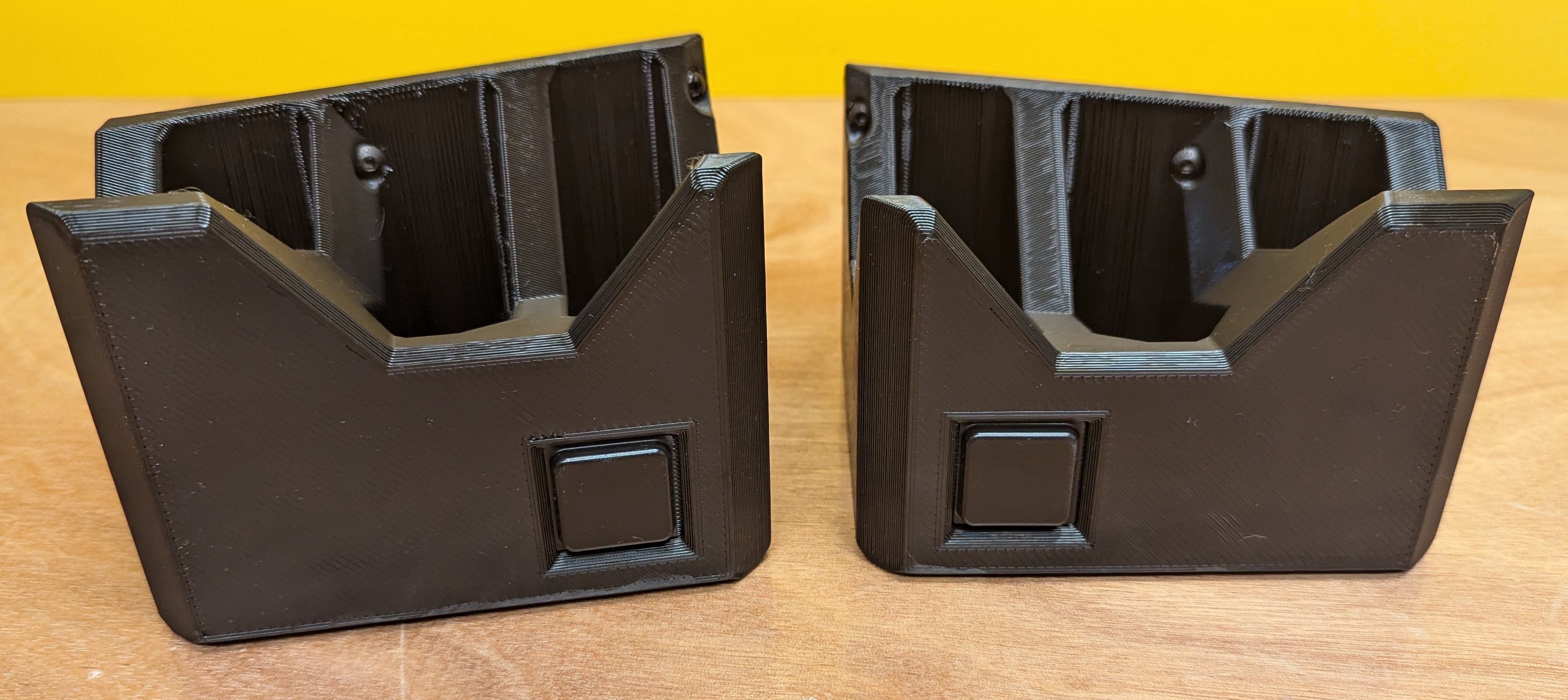
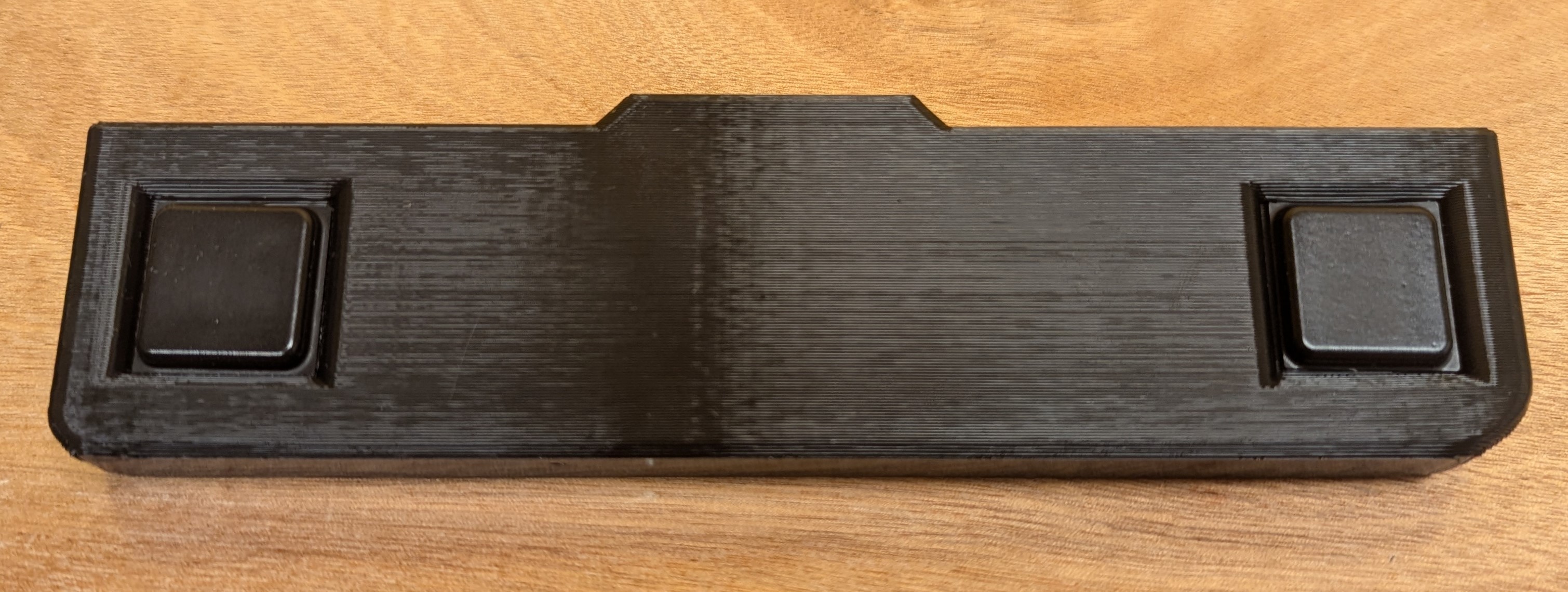
-
On the right tilt bracket (AM2), place an M4 hex nut into each slot on the top of the bracket. Screw an M4x20 button head screw into each nut from below, such that they protrude ~11mm from the top face of the right tilt bracket:
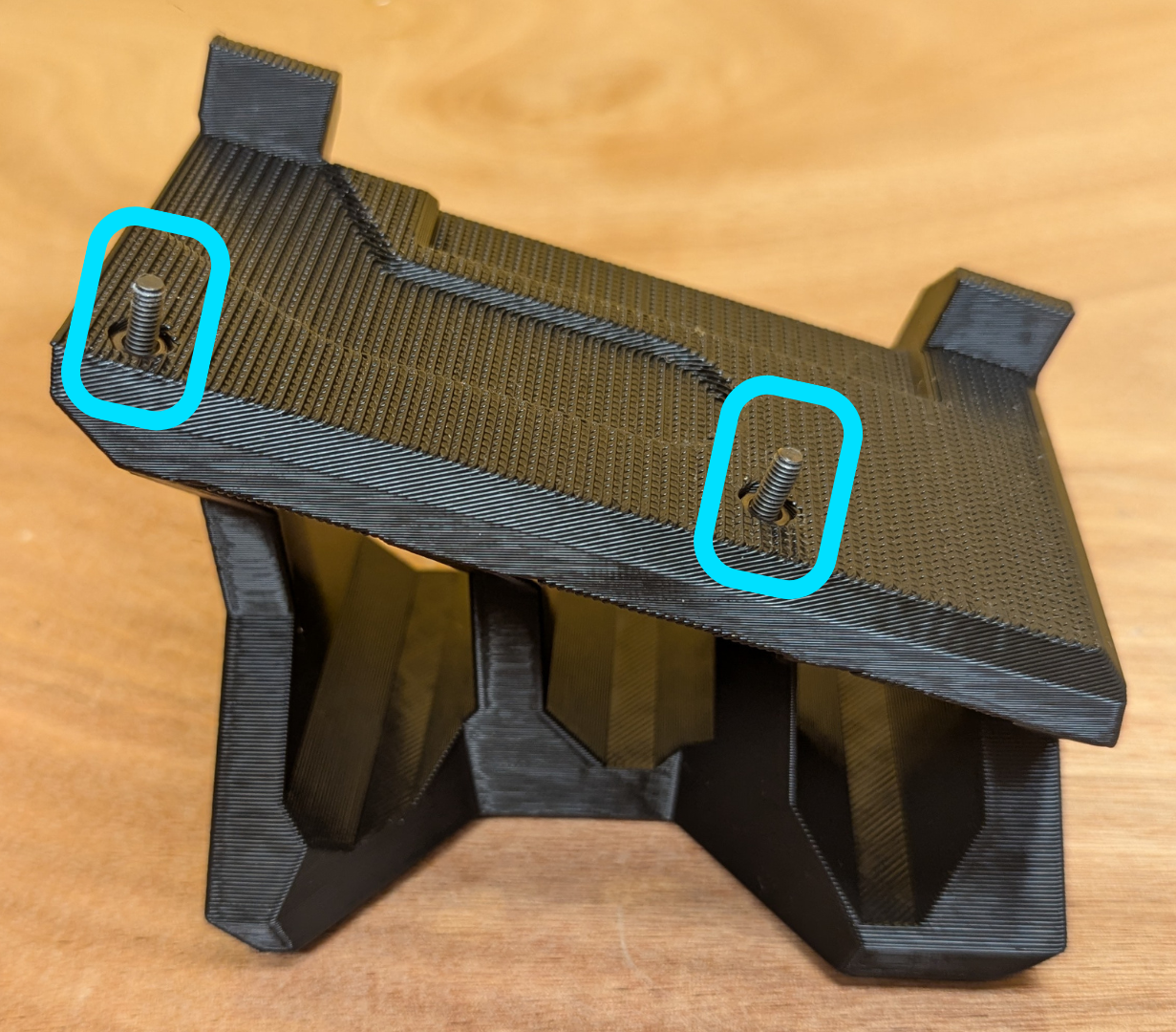
-
Thread a 12mm spacer onto each screw:
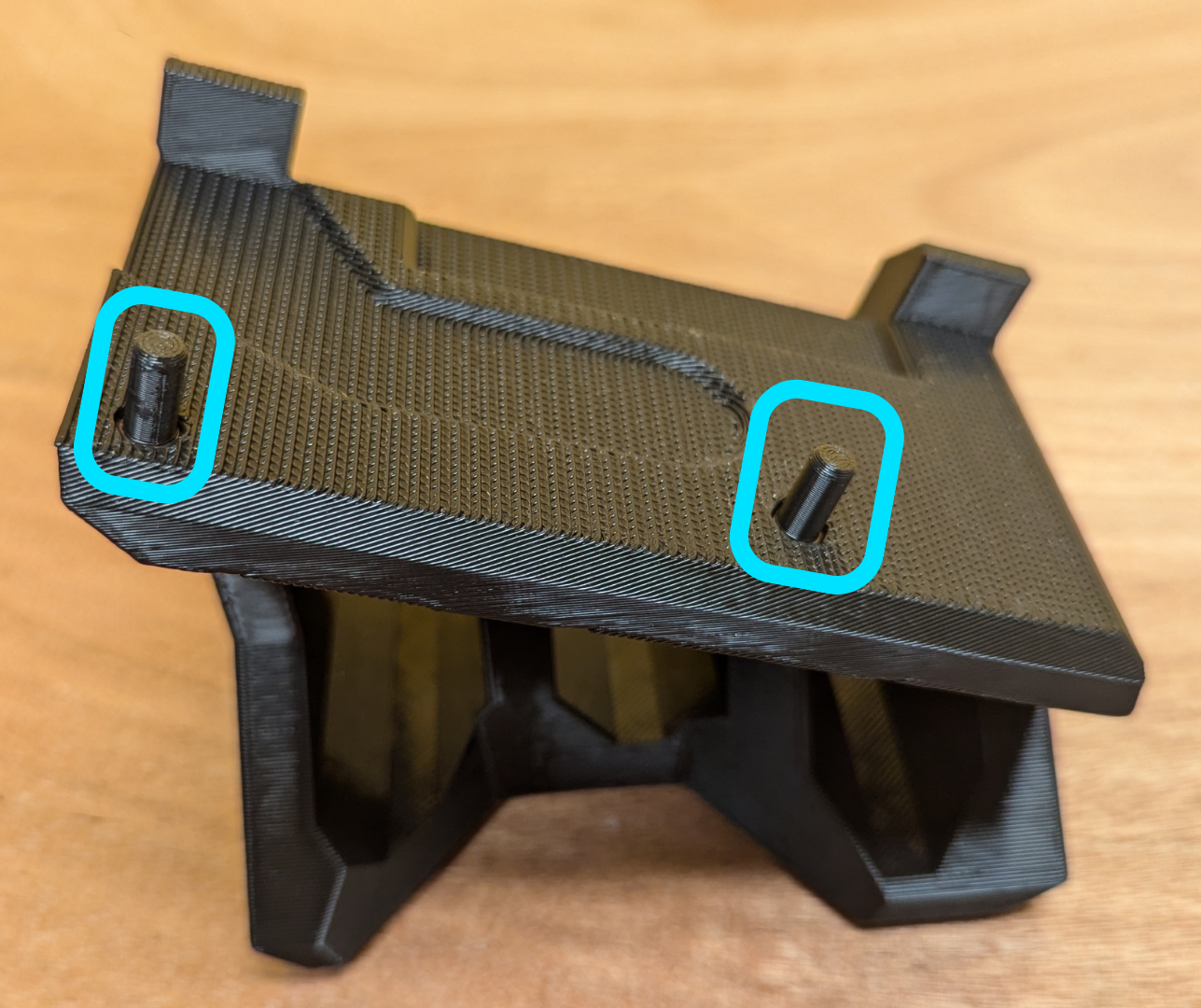
The spacers may be difficult to thread on by hand, use pliers for a better grip.
- On the left tilt bracket (AM1), repeat steps 2-3 using the 3mm spacer for the upper screw:
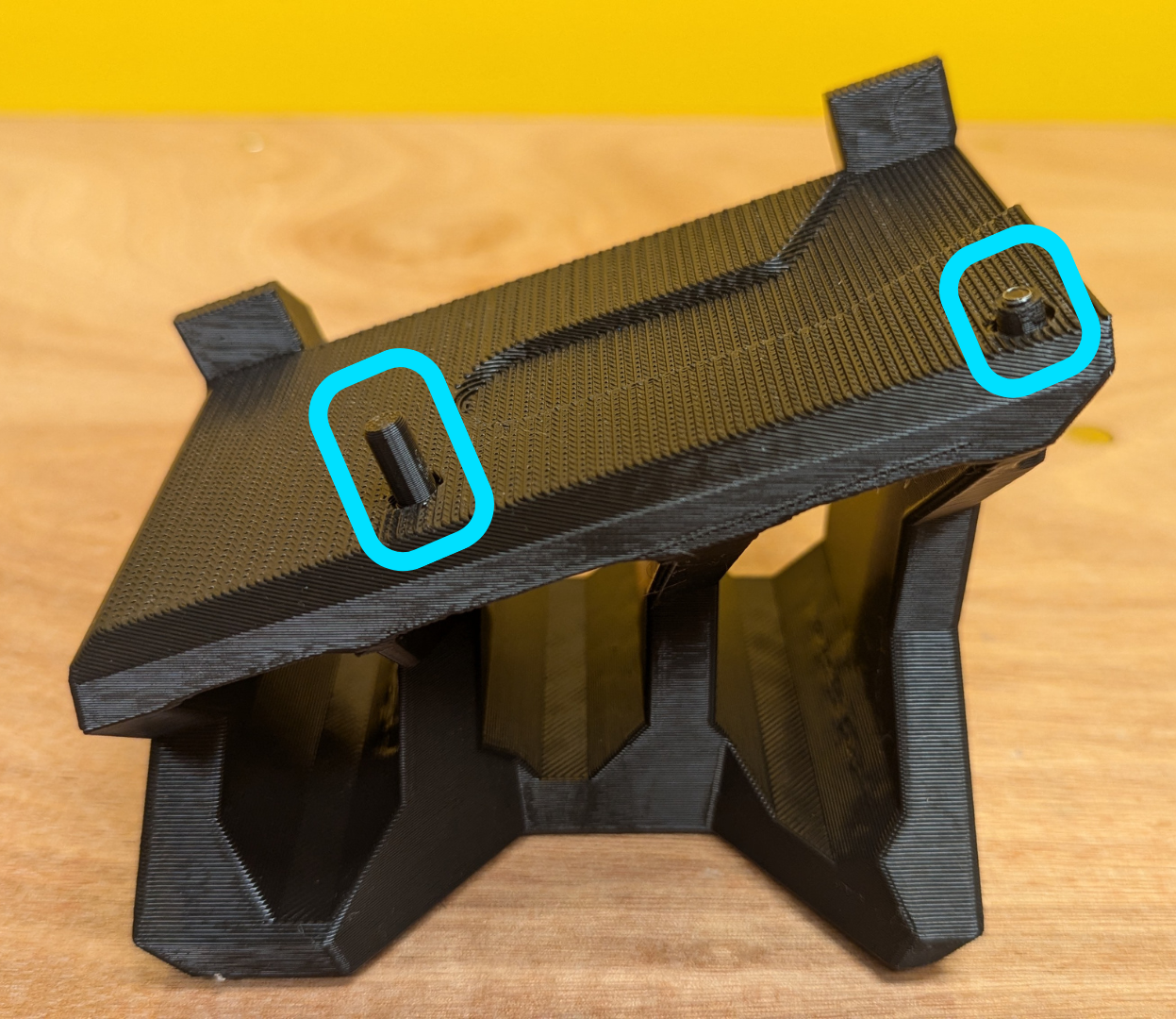
The upper screw and spacer should only protrude ~3mm from the top face of the left tilt bracket (AM1).
-
The protrusions on each tilt bracket (AM1, AM2) correspond to 4 holes on the bottom face of the printer. Carefully tilt the printer forward ~25° and insert the protrusions into these holes, ensuring the tabs on the outer edge of each tilt bracket sit flush against the printer's sides:
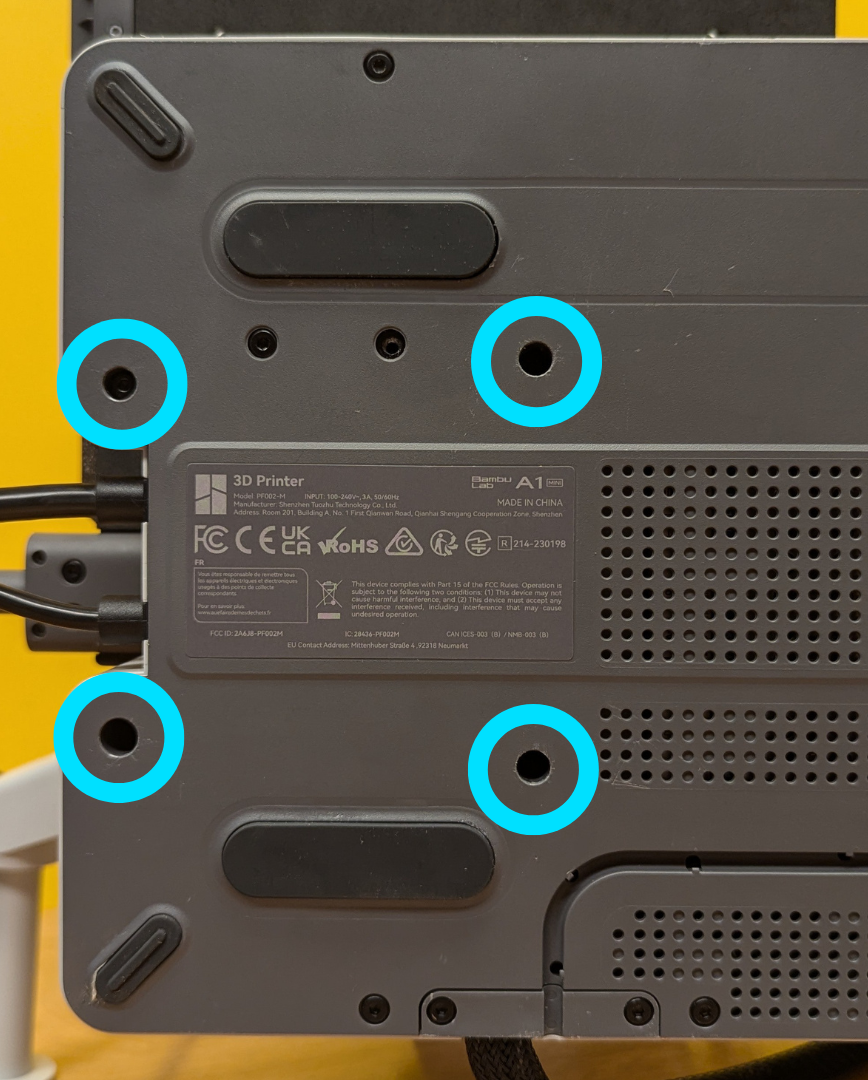
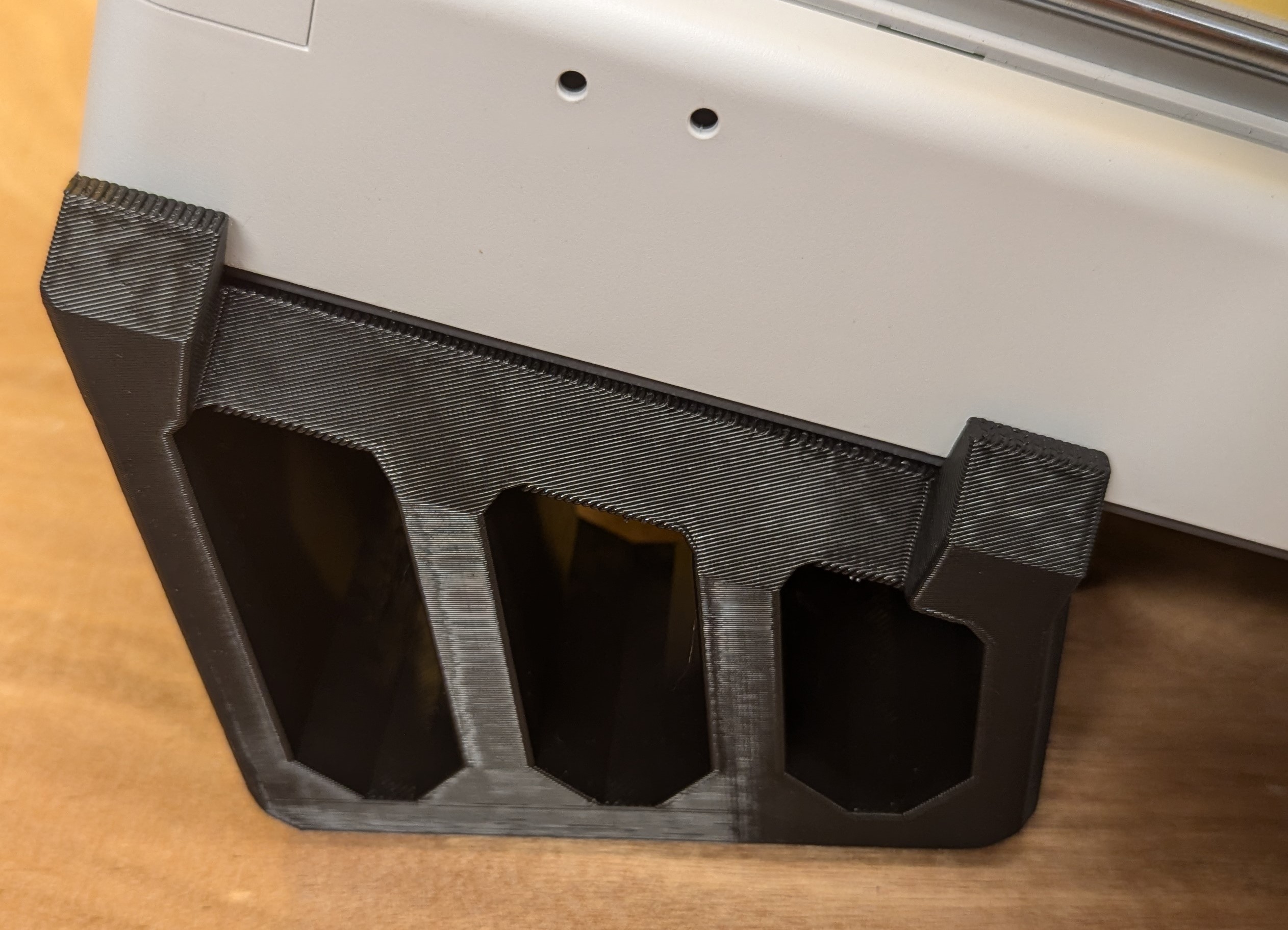
-
Lift up the front end of the printer slightly and slide in the front brace (AM3) until the frame and LCD rest against the front edge of the front brace.
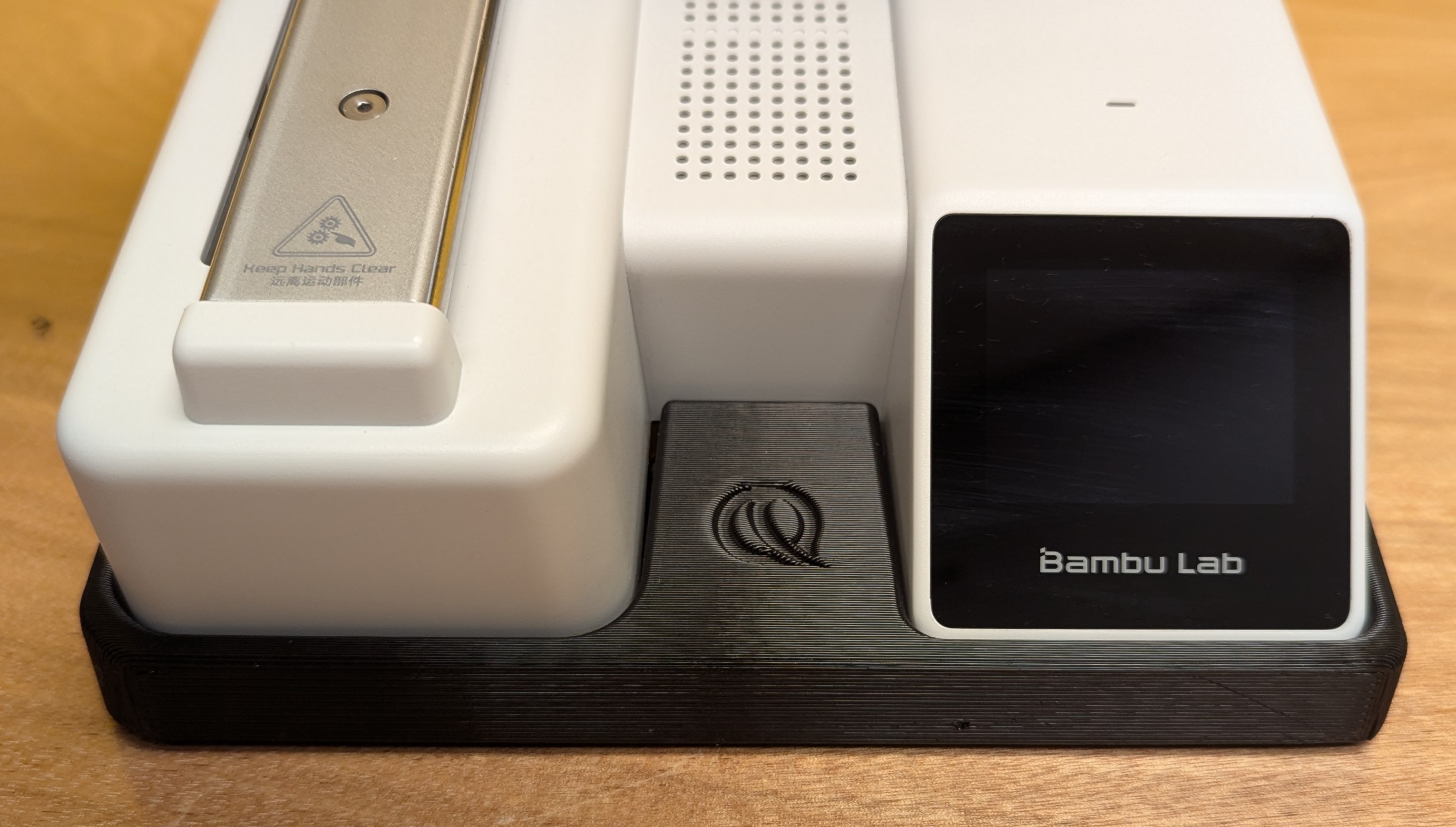
-
Check: Test stability by carefully pushing the printer back & forth, and side to side. If the printer wobbles excessively, or has any rubber feet not solidly against the table surface, adjust the tilt brackets and front brace accordingly (Each piece has some wiggle room to allow for adjustment):
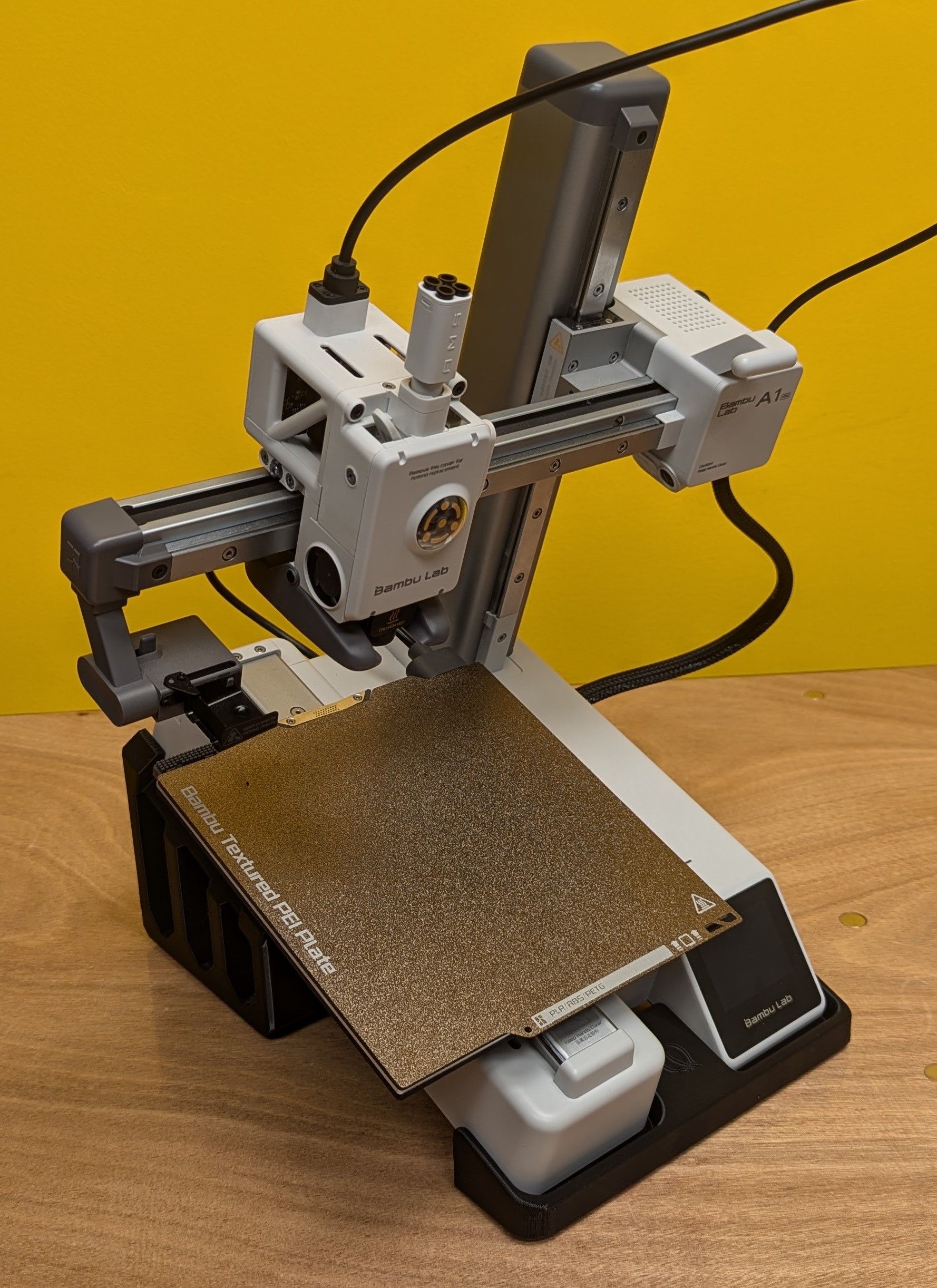
Done!
3.0 Slicing Requirements
Slicer Version
Please use Bambu Studio version 1.9.0.17 or newer.
Alternatively, you can use OrcaSlicer version 2.0.0 or newer.
Settings and Profiles
As a general rule of thumb, printing on VAAPR requires a ~10°C hotter bed and nozzle temperature than you would normally use for a Smooth PEI Sheet.
The VAAPR bed requires no adhesives, and no cleaning between prints.
- Make sure you are slicing all models with the “Smooth PEI Plate / High Temp Plate” setting in Bambu Studio.
- Disable the layer fan for the first 3 layers.
- Make sure the AMS slots in your slicer correspond correctly to the order in which colours are loaded on the Bambu.
- Keep the start and end gcode as it is. AutoFarm3D is built to work with the default bambu gcode and will automatically process your files for automated removal.
Removing Purge Lines (Optional)
The A1 Mini purge lines at the front of the bed are too thin to be ejected and print slightly outside the print area, so they may print slightly off of the VAAPR bed. If you would like to remove them, please import the provided profile below. Alternatively, you can intersect them with the part you’re printing so they get removed together.
To import the profile in Bambu Studio or OrcaSlicer, go to File > Import > Import Configs...

Once you have imported the profile, make sure you have it selected before slicing new objects.

Exporting Files
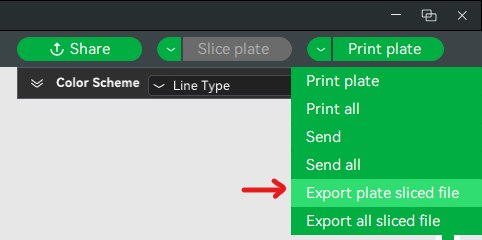
When exporting a file from OrcaSlicer or Bambu Studio, export the object as a “Plate Sliced File”. This will output a file with the extension .gcode.3mf. Bambu Printers reject all other types of file (regular .gcode, .3mf projects).